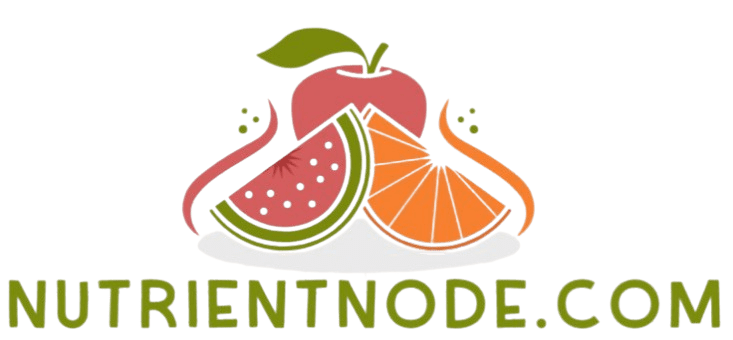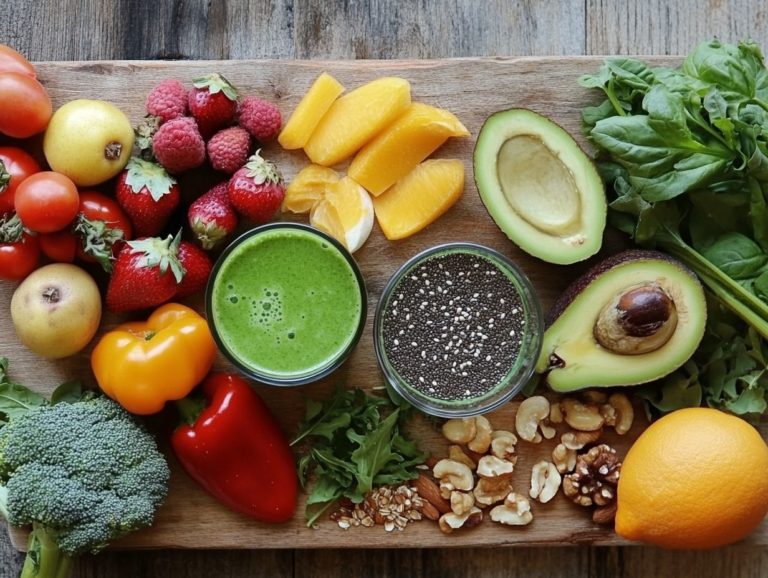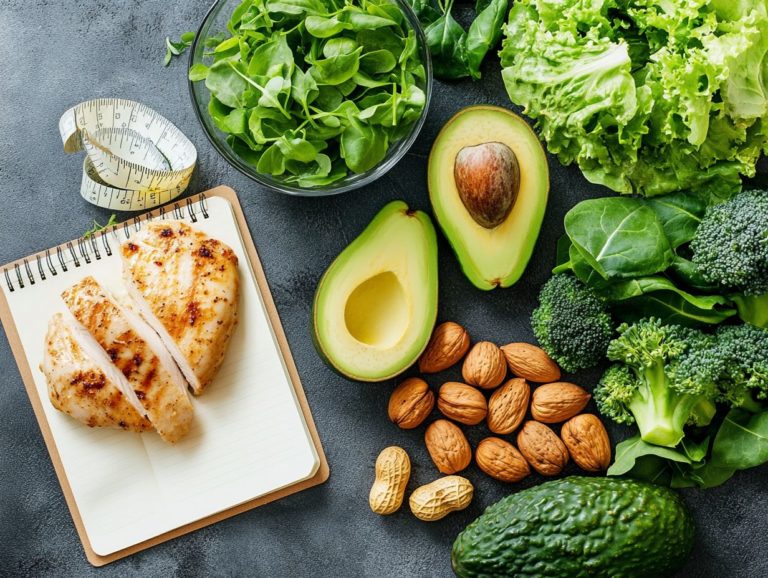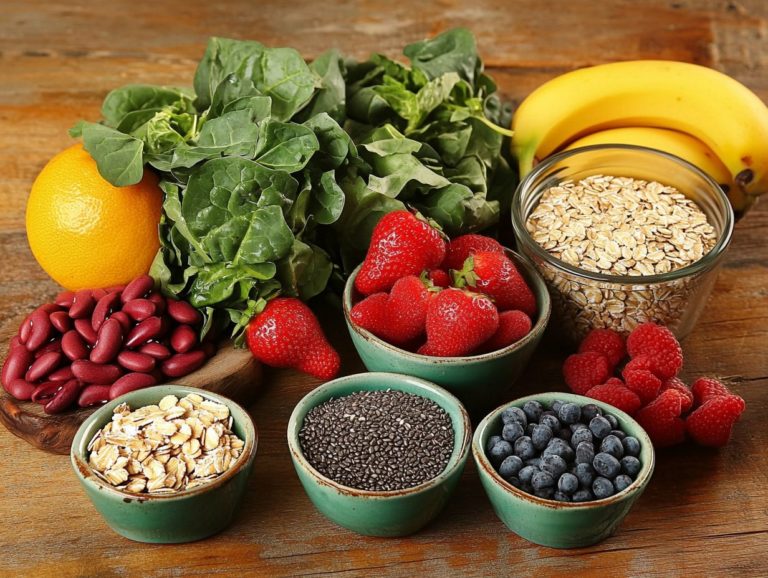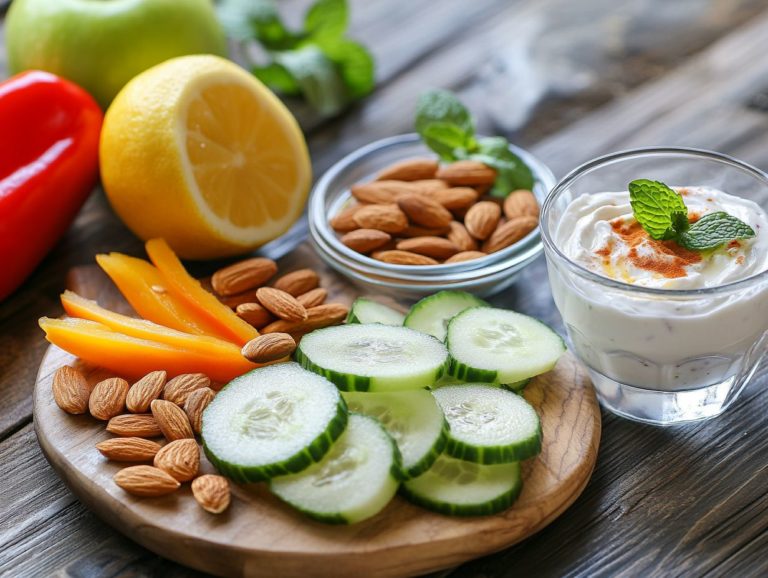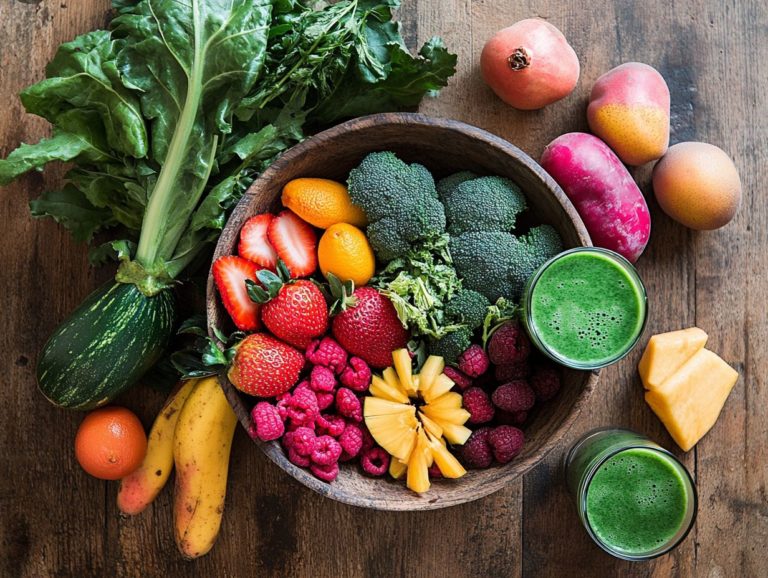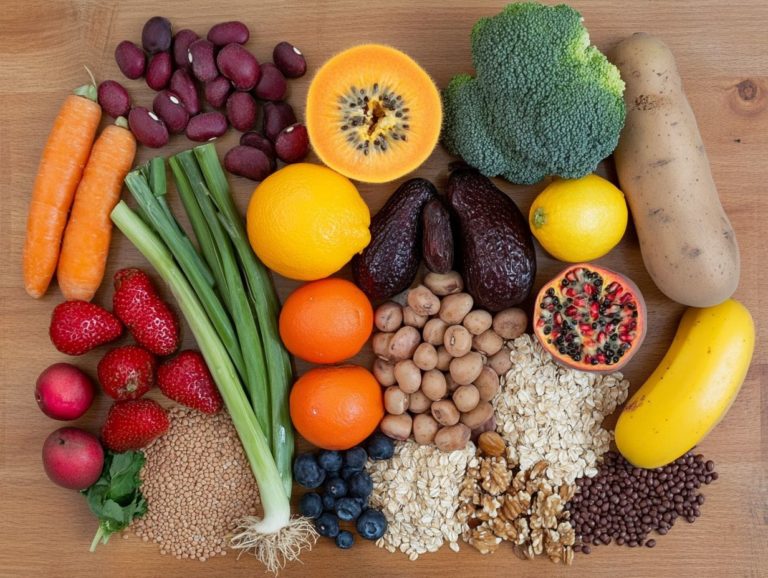The Importance of a High-Fiber Diet
A high-fiber diet is increasingly recognized for its remarkable benefits to health and well-being.
But what, exactly, is fiber, and why should you be mindful of increasing your intake? From enhancing digestive health to elevating overall wellness, fiber plays a vital role in your daily nutrition.
This article delves into the various types of fiber, outlines its health benefits, and highlights delicious plant-based sources that can help you boost your fiber intake.
Are you ready to transform your diet? Let s make those changes today!
Contents
Key Takeaways:
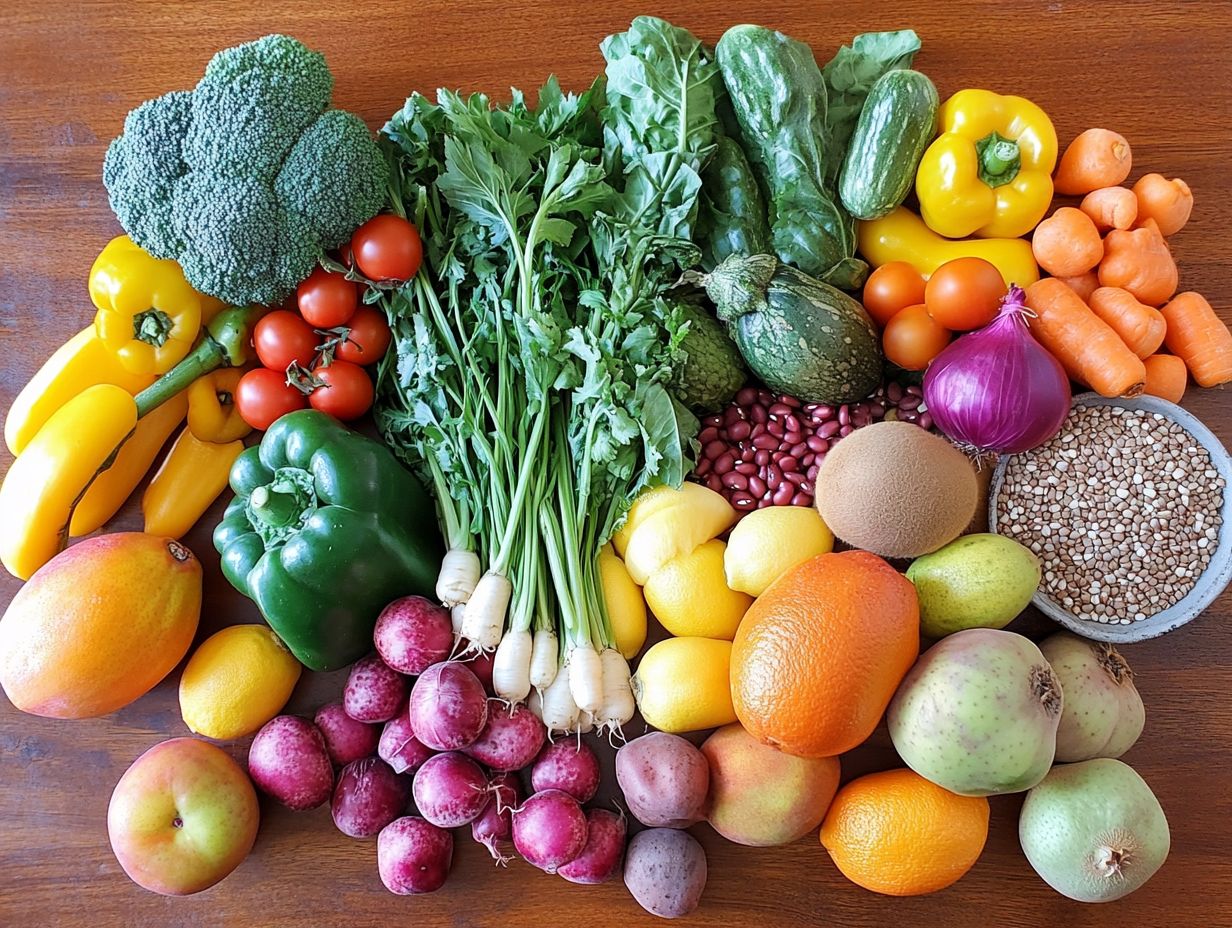
A high-fiber diet is essential for maintaining good health by improving digestive health and overall well-being.
Incorporate plant-based foods like fruits, vegetables, and whole grains into your meals for fiber benefits.
Choose whole-grain options and add beans to your meals to easily increase your fiber intake.
What is a High-Fiber Diet?
A high-fiber diet prioritizes the inclusion of foods abundant in fiber, essential for enhancing digestive health and overall well-being.
This diet typically features a diverse array of fiber-rich options, such as whole grains, fruits, vegetables, and legumes.
These foods promote better health outcomes by improving bowel regularity and nutrient absorption and align with numerous nutrition guidelines advocating for increased fiber intake.
Embracing a higher fiber intake is linked to effective weight management and a lowered risk of chronic diseases.
Defining Fiber and its Types
Fiber is a unique carbohydrate that your body can’t digest. It falls into two primary categories: soluble fiber and insoluble fiber.
Soluble fiber dissolves in water, helping to lower cholesterol levels and regulate blood sugar. Insoluble fiber adds bulk to stool and promotes regular bowel movements, supporting your digestive health.
Both types of fiber play distinct yet complementary roles in enhancing your overall well-being. You can find soluble fiber in foods like oats, beans, and citrus fruits. Research indicates that a diet rich in this type of fiber may reduce the risk of heart disease by 15% (source: American Heart Association).
On the flip side, insoluble fiber, abundant in whole grains, nuts, and vegetables, is crucial for effective digestion and can aid in weight loss by creating a sense of fullness.
Studies suggest that upping your fiber intake can boost satiety, potentially cutting your caloric consumption by 10-20%. This makes fiber an essential ally in your weight management journey.
Why Fiber is Important for Health
Fiber stands as a vital pillar of a healthy diet, providing an array of health benefits that span from digestive wellness to the prevention of chronic diseases.
Research indicates that embracing a high-fiber diet can enhance bowel regularity, diminish the risk of chronic constipation, and lower the likelihood of serious health concerns like colorectal cancer and heart disease.
Fiber also plays a key role in weight management and helps regulate blood sugar levels for those navigating type 2 diabetes.
Benefits for Digestive Health
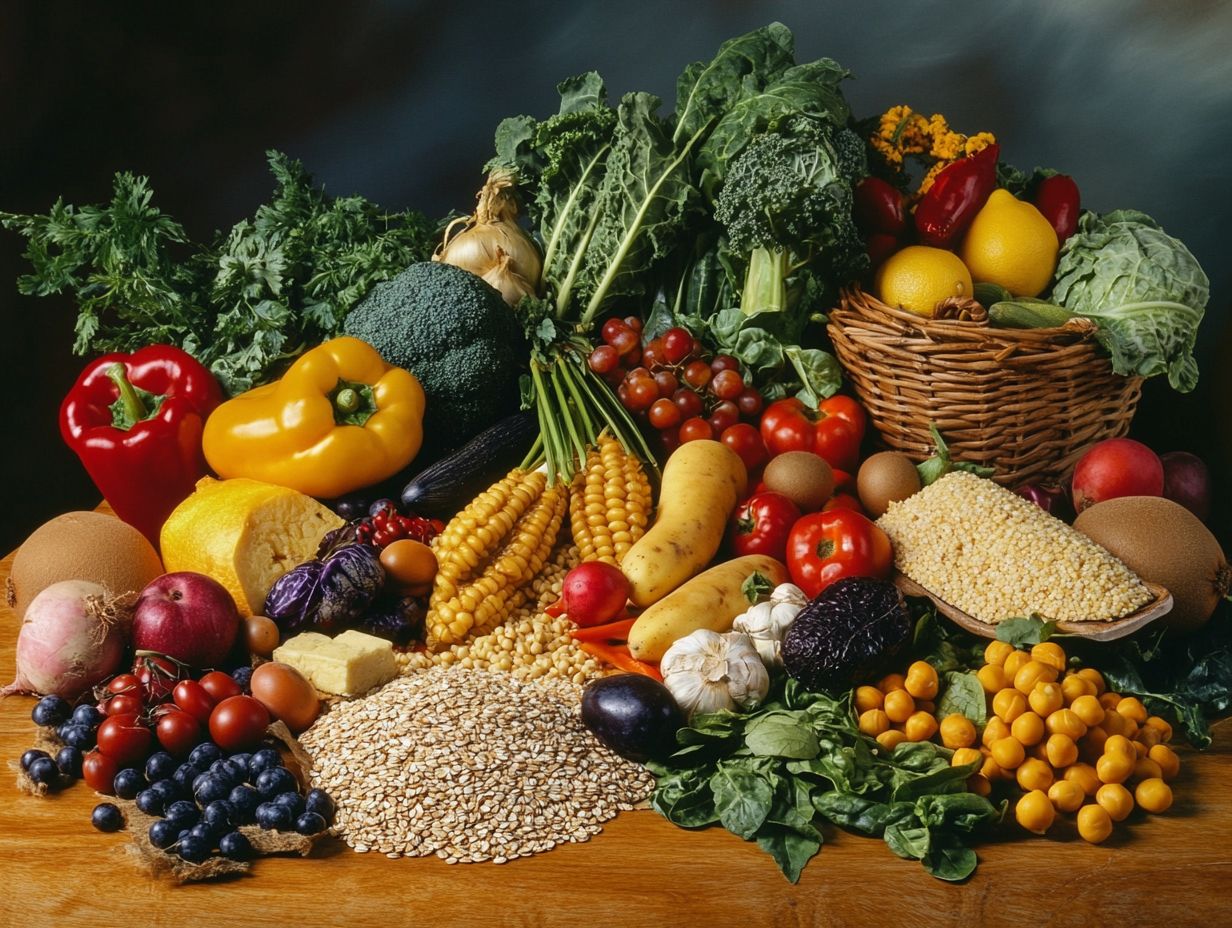
The advantages of a high-fiber diet for your digestive health are truly remarkable. Fiber plays a crucial role in promoting regular bowel movements and preventing chronic constipation.
By indulging in fiber-rich foods like fruits, vegetables, and whole grains, you support your gut bacteria, enhance nutrient absorption, and bolster your overall digestive health.
Research suggests that a daily fiber intake can significantly lower your risk of digestive disorders, including diverticulitis and irritable bowel syndrome. In fact, a study published in the American Journal of Gastroenterology found that participants who consumed at least 25-30 grams of fiber daily reported fewer gastrointestinal issues.
Incorporating more fiber into your diet can be easily achieved by opting for whole grain bread instead of white bread or tossing beans into your salads.
Remember to gradually increase your fiber intake while staying well-hydrated; this will not only ease the transition but also maximize the digestive benefits.
Impact on Overall Well-Being
Plus promoting digestive health, fiber is essential for your overall well-being. It aids in weight control and improves health. A high fiber intake is linked to better cholesterol levels, stable blood pressure, and improved nutrient absorption, which all contribute to a healthier lifestyle.
Numerous studies show that people who consume enough fiber are at a lower risk of chronic diseases like type 2 diabetes and heart conditions. Fiber-rich diets help regulate blood sugar levels and improve insulin sensitivity key parts of metabolic health.
Nutrition guidelines recommend a daily fiber intake of at least 25 grams for women and 38 grams for men. This highlights its critical role in digestive function, supporting heart health, and maintaining a balanced weight.
By adding whole grains, fruits, vegetables, and legumes to your diet, you can unlock significant lifelong health benefits.
Sources of Fiber
You have many fiber sources at your fingertips, especially in whole grains, fruits, vegetables, and legumes.
By thoughtfully incorporating a variety of these fiber-rich foods into your daily meals, you’ll meet your fiber needs and align with dietary recommendations for optimal health.
Plant-Based Foods Rich in Fiber
Plant-based foods are among the richest sources of dietary fiber. Fruits, vegetables, and legumes provide essential nutrients and health benefits. By including a mix of these foods in your diet, you can boost your fiber intake and improve your overall health.
Beans and lentils are champions in the fiber category. They are not only hearty but also full of protein, making them perfect for soups and salads.
Berries, full of antioxidants, can easily be added to smoothies or enjoyed as a quick snack. Leafy greens like kale and spinach enhance both flavor and nutrition in any dish.
These choices boost your fiber intake and promote digestive health, stabilize blood sugar levels, and support weight management.
For optimal benefits, toss some beans into a chili, blend leafy greens into your morning smoothie, or snack on a delightful mix of fresh berries throughout the day.
How to Incorporate More Fiber in Your Diet
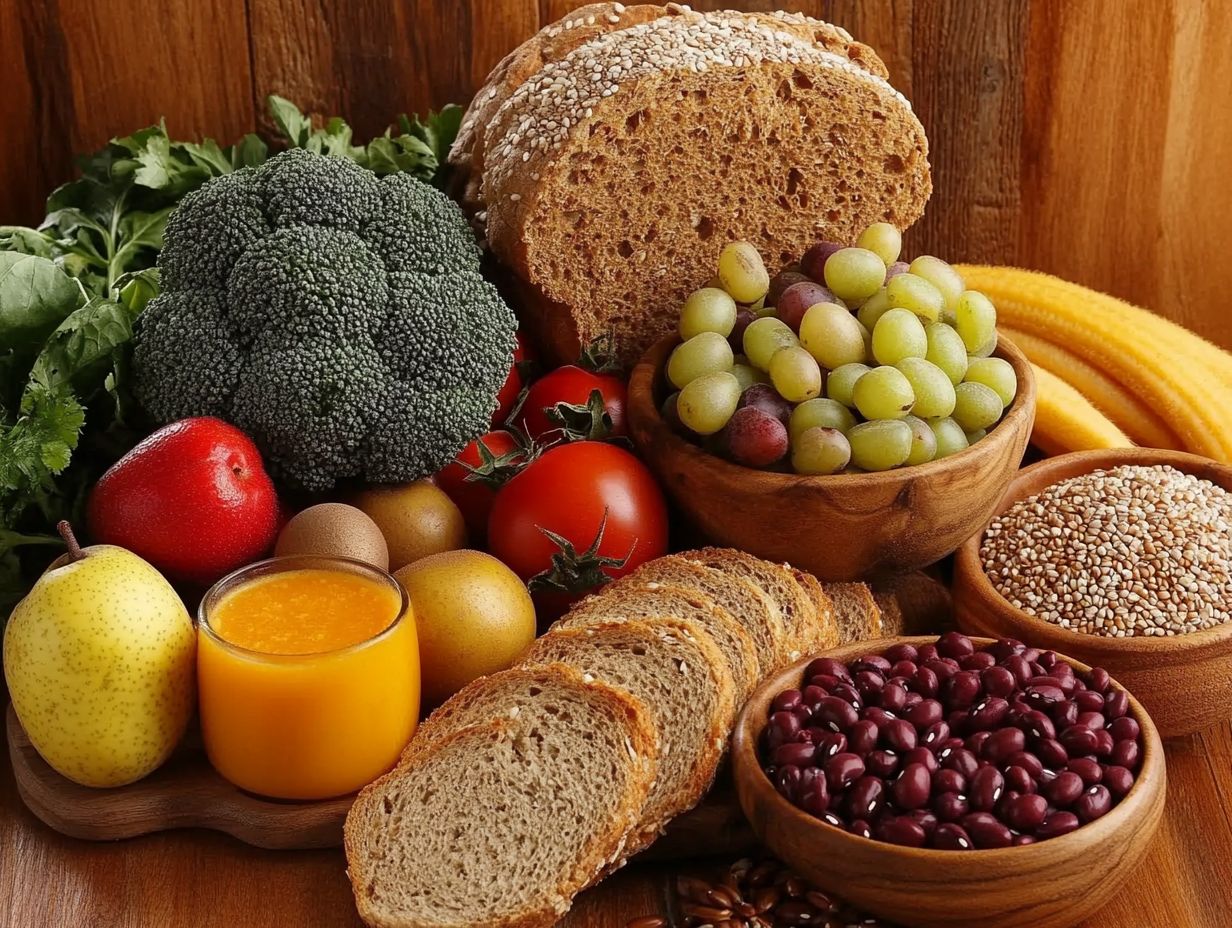
Adding more fiber to your diet is easy and can transform your health! By including fiber-rich foods in your meals and snacks, you can elevate your fiber intake while following expert health recommendations.
Embracing these mindful eating habits is a powerful step towards a healthier lifestyle.
Tips and Tricks for Increasing Fiber Intake
To boost your fiber intake successfully, consider these simple tips and tricks that fit into your daily routine. Start by gradually adding fiber-rich foods to each meal think whole grains, fruits, and vegetables keeping dietary guidelines in mind.
Add legumes, nuts, and seeds to enhance your fiber levels. Meal planning can help; dedicate a day each week to prepare hearty soups filled with beans or vibrant grain bowls topped with colorful veggies and creamy avocado.
On busy days, keep pre-cut fruits or a handful of mixed nuts handy for easy fiber-rich snacking. You also need to drink enough fluids when increasing your fiber intake, as it helps digestion and prevents discomfort.
Using visual cues or tracking methods can motivate you and keep you on track with your fiber goals, turning this dietary shift into a rewarding habit.
Potential Risks of a High-Fiber Diet
While a high-fiber diet is usually beneficial, it’s vital to recognize the potential risks associated with excessive fiber intake, especially if you’re not used to it.
Overindulging in fiber can cause digestive discomfort, like bloating and cramping. If you don’t pair your fiber intake with enough fluids, it may contribute to chronic constipation.
Side Effects and Precautions
Increasing fiber can lead to gastrointestinal discomfort. You may experience gas, bloating, or diarrhea, especially if you change your diet quickly.
To ease these symptoms, increase your fiber intake gradually. Staying well-hydrated supports your digestive health.
Making gradual adjustments can help maintain intestinal balance and minimize discomfort. Including different types of fiber, both soluble and insoluble, can be beneficial.
Soluble fiber, which dissolves in water, helps slow digestion and keeps you feeling full. Insoluble fiber adds bulk to your stool and promotes regularity.
Remember, staying hydrated is crucial for a smooth transition to a high-fiber diet. Drinking plenty of water can help prevent issues like constipation.
If you still feel discomfort, don’t hesitate to contact a healthcare professional to assess your fiber intake and consider potential dietary adjustments.
Frequently Asked Questions
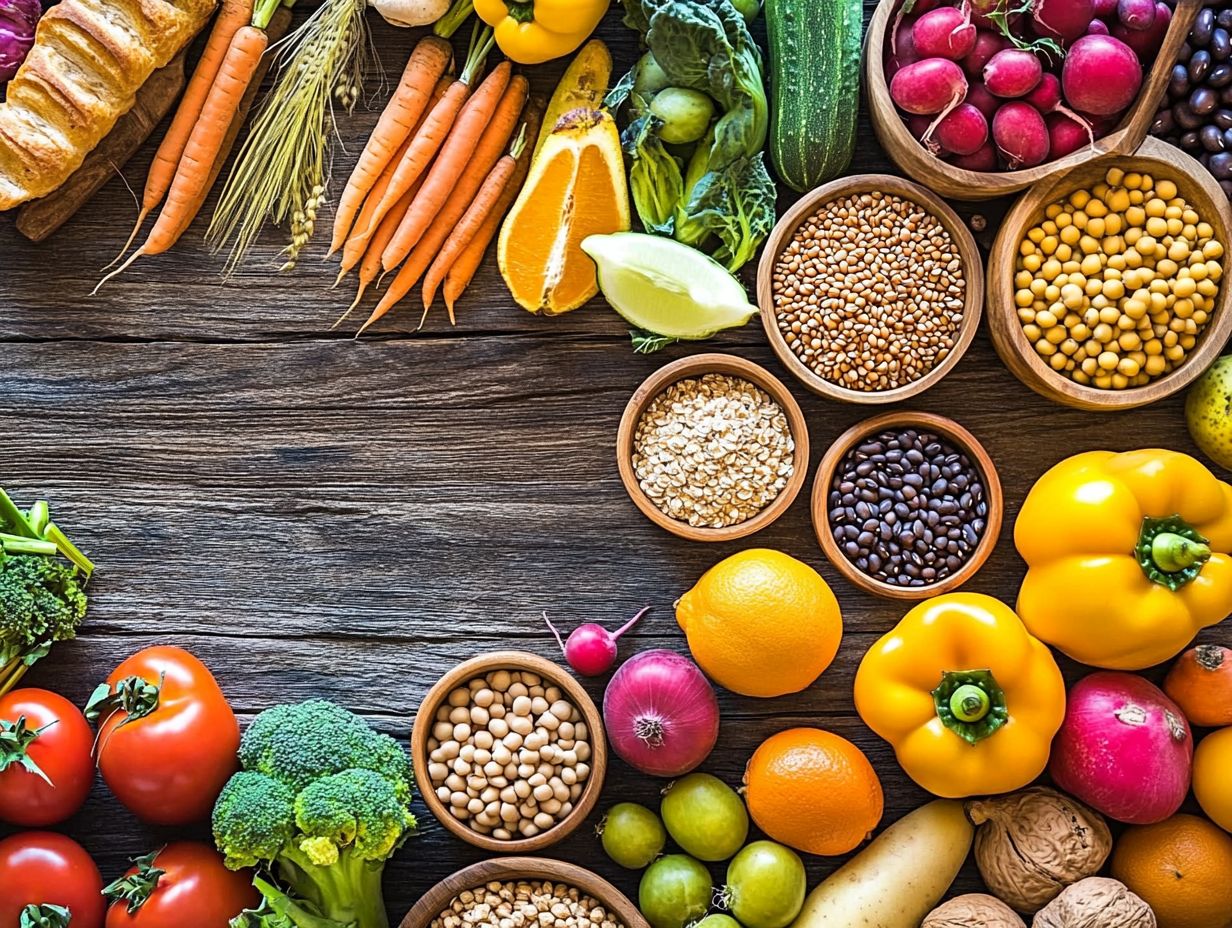
Why is a high-fiber diet important?
A high-fiber diet is important for several reasons. It helps regulate bowel movements, reduces the risk of heart disease, and can aid in weight loss and weight management.
How much fiber should I aim to consume daily?
The recommended daily fiber intake is between 25-30g for adults. However, this may vary depending on age, gender, and individual health goals.
What are the main food sources of fiber?
Fruits, vegetables, whole grains, legumes, and nuts are all excellent sources of fiber. It’s important to choose a variety of these foods to ensure a well-rounded high-fiber diet.
How does fiber help with weight loss?
Fiber helps with weight loss by promoting a feeling of fullness, controlling appetite, and reducing the absorption of calories. It also aids digestion and can help maintain a healthy gut microbiome.
Can a high-fiber diet help prevent chronic diseases?
Yes, a high-fiber diet has been linked to a reduced risk of chronic diseases such as heart disease, diabetes, and certain types of cancer. This is due to its ability to regulate blood sugar levels and lower cholesterol levels.
What are some easy ways to incorporate more fiber into my diet?
Some easy ways to increase your fiber intake include choosing whole grain options, adding fruits and vegetables to meals and snacks, and incorporating legumes and nuts into your diet. It’s also important to drink plenty of water to help the fiber work effectively in your body.
